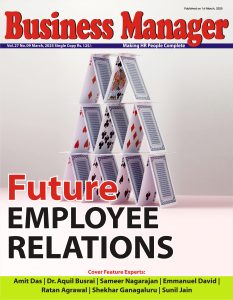“Culture is the deeper level of basic assumptions and beliefs that are shared by members of an organization, that operate unconsciously and define in a basic ‘taken for granted’ fashion an organization’s view of its self and its environment.”
– Edgar Schein, Organizational Culture and Leadership: A Dynamic View, 1985.
Imagine showing up at your cousin’s wedding wearing a jersey and sweatpants or addressing your teacher by their first name in a classroom. You would likely be met with disapproving looks and stares. Our societies and communities are built on commonly agreed shared goals, and social, public, and professional spaces are created through dialogue. Alfred Schutz’s constitutive phenomenology provides an interesting perspective on this idea. He refers to the “unseen background of expectancies” – the unspoken assumptions and shared understandings that guide our interactions in the social world. These expectations shape our behaviour and interpretations but often go unvoiced and unnoticed. Schutz’s unseen expectations are the shared assumptions that guide our daily interactions, such as everyone paying at a restaurant. Building on this concept, Garfinkle pointed out that a common understanding is what happens when you break those rules, like loudly refusing to pay. This disruption exposes the usually invisible expectations that keep things running smoothly. Garfinkle suggests that “common understanding (common sense) would consist of a measured amount of shared agreement if the common understanding consisted of events coordinated with successive positions of events in standard time.” He noted that common understanding between members lessens as they engage in conversation over time. An individual interacts with others primarily based on shared motives and agreements. This applies to social agreements and the culture of an organization. It is a normative structure – collectively negotiated agreements and arrangements of actors. Let us understand it from a different point of view.
Also read – Reddit Post Accuses Zepto of Toxic Work Culture; CEO responds
What is an organization? Is it a physical office where we go to work? Is it the employees who work at the office? Does an organization exist in the form of some document or a bond? It could be someone’s vision, or it could be somebody’s livelihood. Weick (1989) said, “To understand organizing is to understand jazz.” According to Weick, similar to jazz, “Organizing is a continuous flow of movement that people try to coordinate with a continuous flow of input” (Weick, 1989, p. 243). From an organizational discourse perspective, the organization is a shared cognition “jointly produced by participants in an interaction through a series of moves in a series of moments” (Schegloff, 1991, p. 157). The social constructivist lens observes organization not as something already formed or has a stable entity (having fixed characteristics and attributes) but as a ‘social fact’ that emerges in the interaction of its elements. Social institutions such as organizations, the economy, and the marketplace are not primarily shaped through free-flowing social interaction.
Instead, individuals adopt some pre-forced structures to be a part of a larger whole. Thus, organizational communication is somewhat free-flowing but sometimes statutorily standardized (for example, court, parliament, and school). Chia (2000) suggests, “Organizations do not have a straightforward and unproblematic existence independent of our discursively-shaped understandings. Instead, they must be forcibly carved out of the undifferentiated flux of raw experience and conceptually fixed and labelled to become the common currency for communicational exchanges” (p. 513). In the organizational conversation, participants’ communication resources remain category-bound (such as a colleague, client, manager, reporter, board member, etc.) and subject to restrictions on free-flowing actions in an attempt to be suitable to the identities they can enact (Atkinson, 1982, p. 103). Thus, organizational conversations cannot be simply unmotivated; participants actively negotiate and coordinate their turns to persuade for their particular “spin on events” and hope to make their versions of reality stick as they negotiate a retrospective or prospective account of what is happening. Conversations have a sociological significance because it serves as a vehicle for social action. It accommodates a varied range of situations and interactions in which persons with a variety of identities and hidden expectancies operate. Traditional methods of assessing organizational culture often rely heavily on surveys and psychometric tools. While these can offer insights into individual values and attitudes, their effectiveness could be better. The fast-paced digital landscape makes employee sentiments fluid, and self-reported data can be susceptible to bias. Psychometric tools need help to capture the nuances of a dynamic, multi-modal communication environment. While assessing individuals remains crucial, focusing on group or cultural dynamics through methods like conversation analysis may offer more reliable insights into the lived culture of the organization. For example, Kotter’s 8-Step Change Model focuses on creating a sense of urgency, building a guiding coalition, forming a vision for change, empowering broad-based action, planning for and creating short-term wins, consolidating gains and producing more change, anchoring new approaches in the culture, and institutionalizing new approaches. Lewin’s Change Management Model emphasizes unfreezing the current state, moving to a desired state, and refreezing the new state. It involves creating a sense of urgency, diagnosing the current situation, developing a vision, communicating the change, empowering employees, and reinforcing the new culture. The ADKAR Model focuses on the individual’s Awareness, Desire, Knowledge, Ability, and Reinforcement needed to embrace change. Leaders must create awareness of the need for change, foster a desire for the new state, equip employees with knowledge and skills, ensure they can implement the change, and provide reinforcement to sustain the change. All these frameworks recognize the importance of understanding employee values, attitudes, personalities, and leadership skills. This helps assess employee readiness for change, identify potential resistance points, and tailor the change strategy accordingly. While these frameworks focus on the “why” and “who” of cultural change, they often lack a deep understanding of the “how” – how employees enact the organization’s culture in their daily interactions; surveys and interviews may reveal attitudes but do not capture the nuances of on-the-ground cultural practices.
We usually undermine the value of talk and mostly allot our sensory resources to what is visible rather than what has been said. In traditional thinking, talk and actions are viewed as mutually exclusive. Some common maxims like “Talk is cheap,”; “easier said than done,” and “action speaks louder than words” are widely accepted lay judgments that atone for the value of words and talks. However, a particular use of words and tones as a response to reality in a particular movement represents the orientation of an individual to reality-in-shaping in that specific moment; in a sense, reality shapes as we speak and interact.
Stay connected with us on social media platforms for instant updates click here to join our LinkedIn, Twitter & Facebook
























